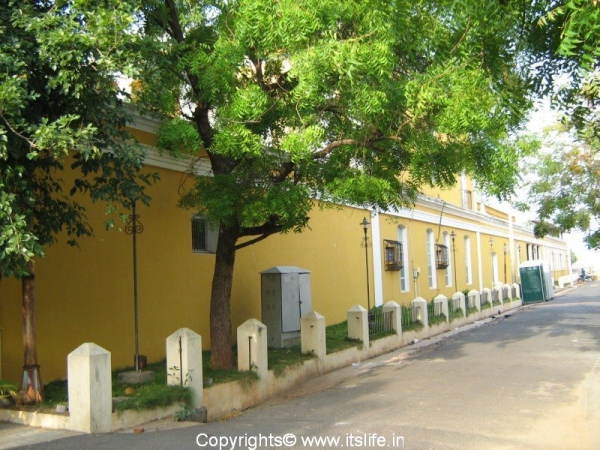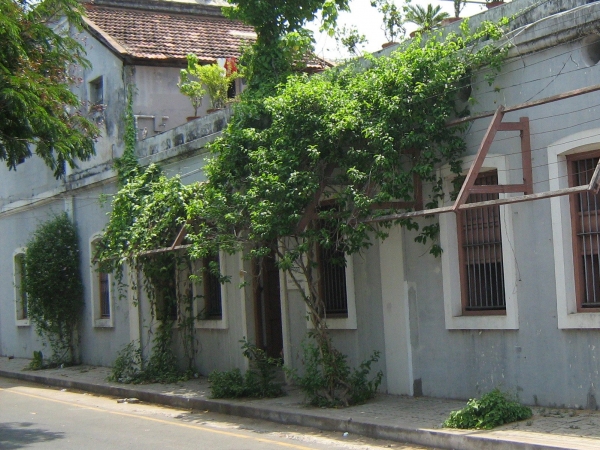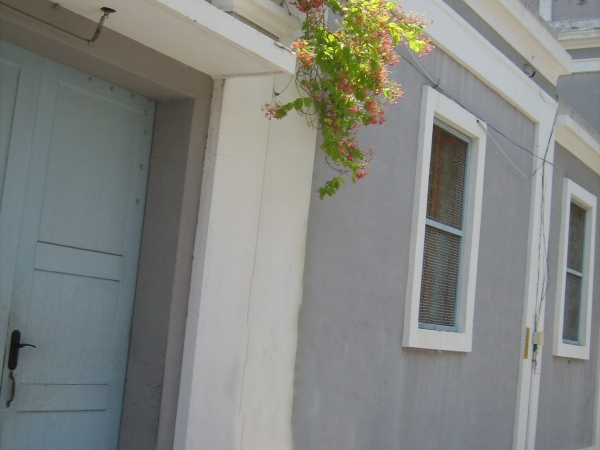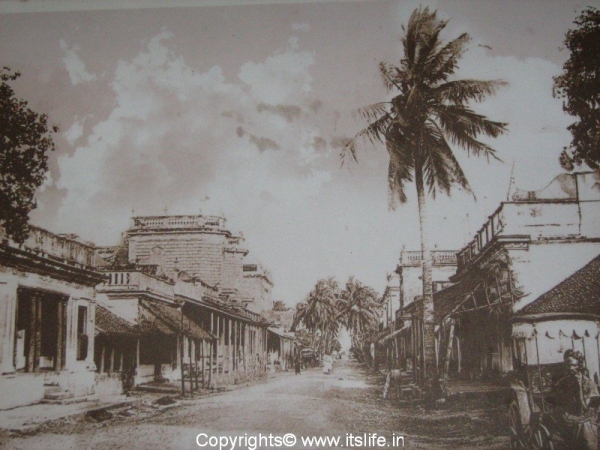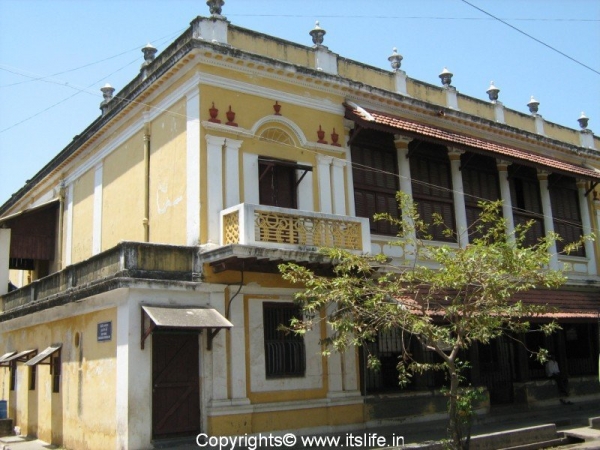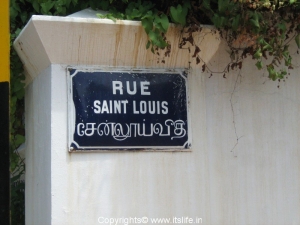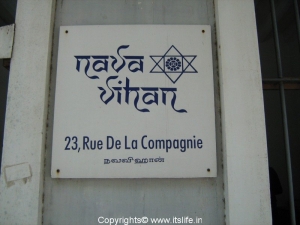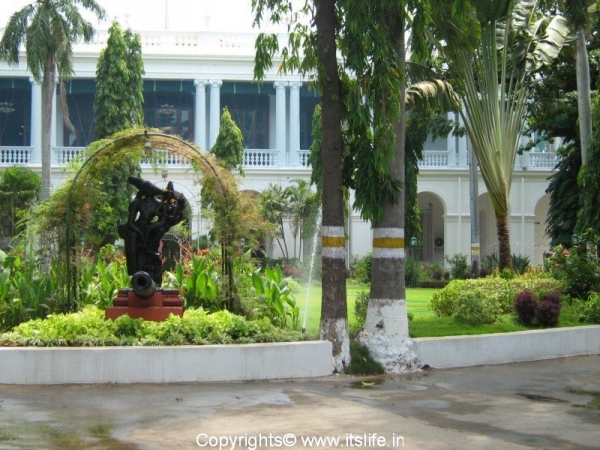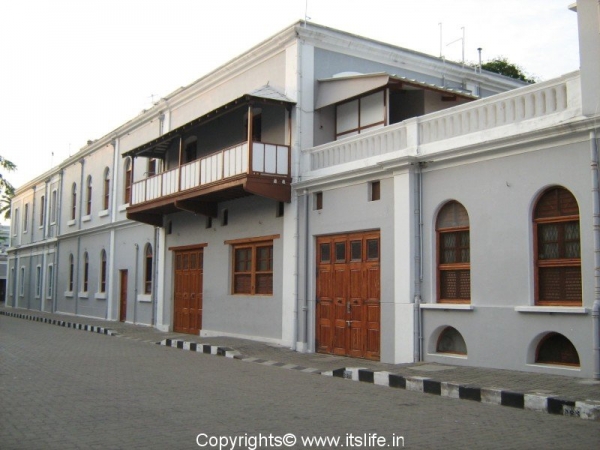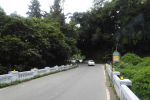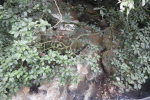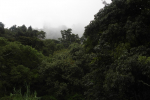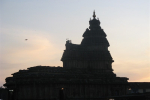Apart from Parks, Beaches, Backwaters, Temples, Ashrams and Auroville another interesting aspect of Pondicherry are its heritage buildings. The heritage buildings of Pondicherry comprises of buildings with only Tamil architecture or buildings with only French architecture and some buildings with a blend of both Tamil and French architecture. What I liked the most about the buildings is the portico on either side of the main door supported by columns with a raised platform. It would be a great place to sit out and chit-chat and munch on crispy chakkali or murukku. The other appealing aspect of the homes is the open courtyard in the middle of the house with natural light streaming inside. Pondicherry town is split into the French and Tamil quarters.
French Quarter
The French quarter was built near the sea face on sand. The streets are extensive and well laid out with huge buildings surrounded by high walls lining the streets. Elaborate gates open to path leading to the mansions. The other residential buildings are simple and have flat roofs, with an inner courtyard, high ceilings and colonnaded porticos. The stairs leading to the first floor and terrace are striking built with wood or iron.
The arched windows and doors have wooden louvers shutters, the facades are divided into smaller panels and the parapets are designed with terracotta. The floors are polished with red oxide, or tiled. The arches above the windows and doors are covered with colored Belgian glass.
Few Hindu Tamil houses with architecture reflecting a fusion of European, French and Tamil are found in Vysial Street between Mission Street and M.G.Road. These houses, which are more than 250 years old, belonged to rich Tamil merchants. You can experience living on this street in the heritage hotel – Calve.
Tamil Quarter
Tamil quarter comprises of many temples and residential buildings around it. The streets are laid out in east-west direction. The houses are built back-to-back and are in continuous rows. The entrance of the house has portico with low platform and wooden or concrete pillars. This is known as “thinnai” in Tamil. These houses with the typical Tamil architecture have lean-to-roofs (roof with only one slope), ledges, pilasters, a pilaster is a slightly-projecting column built into a wall for ornamental purposes and engaged columns and ornamental parapets.
Inside the house is the open courtyard known as mutram through which the Kitchen, dining and bathrooms are accessible. The smaller residential buildings are typically the Tamil architecture and the bigger buildings are an amalgamation of both Tamil and French architecture.
Names of roads in Pondicherry are written in French.
Some famous heritage buildings in Pondicherry are –
The Mairie – This appealing building is on Gourbert Avenue and houses the municipality offices.
Raj Niwas – The Governor of Poducherry’s residence is a 350 year’s old imposing beautiful white mansion, whose architecture is a blend of French and Tamil architecture. It was built by the French trading company that ruled puducherry in 1674 and the building was taken into procession by the French in 1769. Open to public on national holidays.
Romain Rolland Library – This library was established in 1872 and has a book collection of more than 3,00,000 volumes in both French and English.
Ananda Ranga Pillai Museum – This building was completed in 1738 and is one of the oldest functional building in Pondicherry.
UCO Bank – Dates back to 1916.
Legislative Assembly
Cercle de Puducherry – A private club
Aurobindo Ashram Dining Room – Built around 1735
